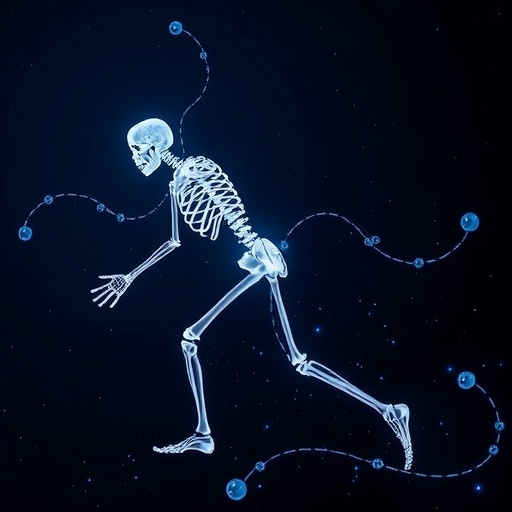How did life transition from the simplistic design of microbial cells to the intricate architecture of modern eukaryotic cells? This profound question has intrigued scientists for decades, underscoring the vast evolutionary leap responsible for the complexity observed in plants, animals, and fungi today. In a groundbreaking study published recently in The EMBO Journal, researchers from the Indian Institute of Science (IISc) unveil novel insights into this mystery, focusing on the evolution of the cytoskeleton—the dynamic cellular scaffold that forms the backbone of eukaryotic cell structure and function.
The cytoskeleton in contemporary eukaryotic cells is a marvel of biological engineering. It consists primarily of three filamentous structures: actin filaments, microtubules, and intermediate filaments. Together, these protein constituents confer shape, facilitate intracellular transport, power motility, and orchestrate critical processes like cell division. While this system’s sophistication is well-established, the evolutionary origins of its constituent proteins—how ancient microbes gave rise to such complexity—have remained elusive. The new research from IISc offers compelling biochemical and structural evidence tracing this evolutionary journey back to archaea, a domain of life once thought too simple to harbor such complexity.
Central to these revelations is a group of microbes known as Asgard archaea, discovered in some of the planet’s most extreme environments, including deep-ocean sediments. Genomic studies have previously hinted that these archaea are the closest known relatives of all modern eukaryotes. Intriguingly, Asgard archaea possess genes encoding proteins akin to those of the eukaryotic cytoskeleton, potentially representing transitional evolutionary stages. Leveraging these connections, the IISc-led team collaborated with notable institutions such as IISER Pune, NCBS, and NISER to dissect the molecular characteristics of two paralogous proteins from an Asgard member, Odinarchaeota yellowstonii.
Odinarchaeota yellowstonii—named after the Norse god Odin and isolated from Yellowstone National Park—supplies a remarkable window into early cytoskeletal evolution. The team focused on two FtsZ paralogs, FtsZ1 and FtsZ2, both belonging to a protein family ancestral to tubulin, the key building block of eukaryotic microtubules. These proteins, crucial for bacterial cell division, had been largely unexplored in Asgard archaea, making their study a pivotal endeavor to understand cytoskeletal origins.
Through sophisticated biochemical assays and cutting-edge cryo-electron microscopy techniques, the researchers unveiled that OdinFtsZ1 and OdinFtsZ2 exhibit distinct assembly behaviors. OdinFtsZ1 polymerizes into curved single filaments, reminiscent of the contractile rings formed by bacterial FtsZ during cytokinesis. In stark contrast, OdinFtsZ2 spontaneously assembles into stacked spiral rings, structures that strikingly resemble primitive microtubule-like tubules. This differentiation in filament morphology provides a smoking gun for the evolution of cytoskeletal diversity from simpler ancestral forms.
Beyond their structural differences, these proteins exhibit unique modes of membrane attachment, signifying an early division of functional labor seldom documented in prokaryotic cells. OdinFtsZ1 anchors to the cell membrane directly through a helical tail, whereas OdinFtsZ2 utilizes an adaptor protein for indirect tethering. This nuanced specialization implies a primordial cooperation between cytoskeletal elements, foreshadowing the intricate interplay observed among filament systems in extant eukaryotes.
The complexity observed in modern cytoskeletal networks is believed to have evolved through gene duplication events, followed by functional divergence and enhanced cooperation between different filament types. The discoveries detailed in this study strongly support the hypothesis that these evolutionary processes had already commenced in Asgard archaea, positioning these organisms as living archives of the cellular innovations that paved the way for eukaryotic life.
The dual nature of FtsZ paralogs in Odinarchaeota thus captures a crucial evolutionary snapshot—a transitional interface where simple microbial filaments began to diversify and specialize, assembling into multifunctional frameworks. Such insights bridge a gap in our understanding of how the cytoskeleton’s molecular complexity arose, shedding light on the cellular mechanisms facilitating the emergence of structural dynamism and intracellular organization.
Looking forward, the research group aims to culture Asgard archaea in laboratory settings, a pursuit that would enable direct cellular observations of these ancient proteins in vivo. Such experimentation holds the potential to revolutionize our comprehension of early cytoskeletal operation and elucidate how these foundational filaments influenced the advent of complex cellular life.
Saravanan Palani, Assistant Professor of Biochemistry at IISc and corresponding author of the study, emphasizes the evolutionary ramifications of their findings: “These proteins preserve a snapshot of an ancient transition. They connect the threads of history between the simplest microbial filaments and the dynamic scaffolds that sustain all higher organisms.” This conceptual framework transforms our understanding of cellular evolution, suggesting that the sophisticated eukaryotic cytoskeleton emerged not abruptly but gradually from simpler ancestral elements in the microbial world.
This research not only redefines molecular evolutionary timelines but also underscores the profound continuity of life, tracing complex cellular architectures back to the depths of Earth’s microbial past. The findings, by revealing how diverse filament morphologies and membrane associations began to take shape early in evolutionary history, invite a reconsideration of how life’s cellular machinery evolved to its present-day intricacy.
In sum, the molecular investigation of Odinarchaeota’s FtsZ paralogs marks a landmark step toward deciphering the cytoskeleton’s origins. By illuminating the early morphological and functional diversification of cytoskeletal proteins, this work provides a vital piece to the grand evolutionary puzzle that defines life’s transition from simplicity to complexity.
Subject of Research: Evolution of cytoskeletal proteins in Asgard archaea, focusing on filament morphology and membrane tethering in FtsZ paralogs.
Article Title: Distinct filament morphology and membrane tethering features of the dual FtsZ paralogs in Odinarchaeota
News Publication Date: 8-Aug-2025
Web References:
https://doi.org/10.1038/s44318-025-00529-7
Image Credits: Saravanan Palani lab, made using BioRender
Keywords:
cytoskeleton, Asgard archaea, Odinarchaeota, FtsZ paralogs, microtubule evolution, tubulin, cryo-electron microscopy, membrane tethering, cytoskeletal evolution, ancient microbes, eukaryotic cells, cell division




